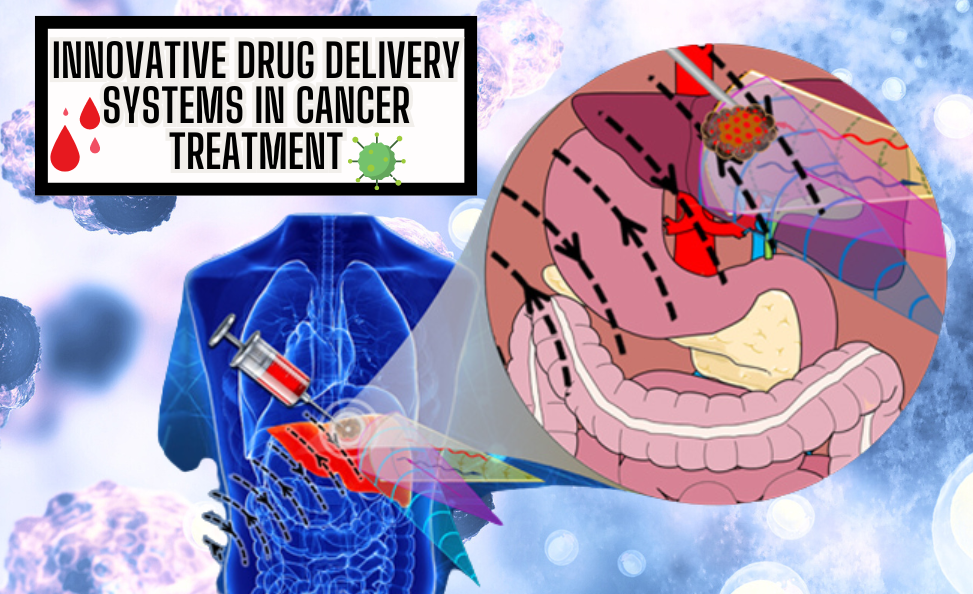BLOG
The Evolution of Cancer Treatments: A Journey from Ancient Remedies to Modern Innovations

Cancer has been a formidable foe throughout human history. From ancient times to the present day, our understanding and treatment of this complex group of diseases have evolved dramatically. This journey through the evolution of cancer treatments reflects not only advancements in medical science but also changes in our approach to healthcare and patient care.
Ancient Approaches to Cancer Treatment
In ancient civilizations, cancer was often misunderstood and feared. Early medical practitioners had limited knowledge of the disease's nature and causes. Treatments were largely based on herbal remedies, rituals, and surgeries. For instance, in ancient Egypt, records such as the Edwin Smith Papyrus describe the use of surgical techniques and cauterization for tumors, although these methods were rudimentary by today's standards.
The Birth of Modern Oncology
The modern era of cancer treatment began in the 19th and early 20th centuries, with significant breakthroughs in understanding the disease and its treatment. The discovery of the role of genetics and cellular biology laid the groundwork for more targeted approaches. Key milestones during this period include:
The Advent of Surgery: The late 19th century saw the introduction of more sophisticated surgical techniques. Surgeons like William Halsted developed radical mastectomies, which involved the removal of cancerous breast tissue along with surrounding lymph nodes. This approach aimed to control the spread of the disease.
Radiation Therapy: The discovery of X-rays by Wilhelm Röntgen in 1895 revolutionized cancer treatment. Radiation therapy became a standard treatment option, offering a non-invasive method to target and destroy cancer cells. Over time, advancements in radiation technology, such as linear accelerators, improved the precision and effectiveness of this treatment.
Chemotherapy: The 1940s marked the beginning of chemotherapy as a cancer treatment. The use of chemical agents to kill cancer cells was inspired by observations that certain chemicals, such as mustard gas, had anticancer properties. The development of drugs like methotrexate and cyclophosphamide paved the way for combination chemotherapy, significantly improving survival rates for many cancers.
The Era of Targeted Therapies and Immunotherapy
The latter half of the 20th century and the early 21st century witnessed a revolution in cancer treatment with the advent of targeted therapies and immunotherapy:
Targeted Therapies: The discovery of specific genetic mutations associated with cancer led to the development of targeted therapies. These treatments focus on specific molecules or pathways involved in cancer cell growth. For example, imatinib (Gleevec) was developed to target the BCR-ABL protein found in chronic myeloid leukemia (CML), leading to remarkable improvements in patient outcomes.
Immunotherapy: Immunotherapy represents a new frontier in cancer treatment, harnessing the body's own immune system to fight cancer. Checkpoint inhibitors, such as pembrolizumab (Keytruda), block proteins that inhibit immune responses against cancer cells, while CAR-T cell therapy involves modifying a patient's T cells to better recognize and attack cancer cells. These therapies have shown promise in treating various types of cancer, including melanoma and lymphoma.
Precision Medicine and Personalized Approaches
The concept of precision medicine has gained traction in recent years, emphasizing the need for individualized treatment plans based on a patient’s unique genetic profile and the specific characteristics of their cancer. Advances in genomics and molecular biology have enabled doctors to tailor treatments more precisely, increasing the likelihood of successful outcomes while minimizing side effects.
Integrative and Supportive Care
In addition to technological and pharmaceutical advancements, there has been a growing recognition of the importance of integrative and supportive care. This approach focuses on improving the overall well-being of patients through complementary therapies, lifestyle changes, and psychosocial support. Techniques such as nutrition counseling, physical therapy, and stress management have become integral components of comprehensive cancer care.
The Future of Cancer Treatment
The future of cancer treatment looks promising, with ongoing research and technological innovations poised to further revolutionize care. Some areas of focus include:
Genomic and Epigenetic Research: Advances in genomic sequencing and epigenetics are likely to provide deeper insights into cancer mechanisms, leading to more effective and targeted treatments.
Artificial Intelligence: AI and machine learning are being increasingly utilized to analyze vast amounts of data, predict patient outcomes, and develop new treatment strategies.
Cancer Vaccines: Research into preventive and therapeutic cancer vaccines aims to stimulate the immune system to recognize and fight cancer cells more effectively.
Evolution of Cancer Treatments (FAQ)
Q1: What are the most common types of cancer treatments?
A1: The most common types of cancer treatments include surgery, radiation therapy, chemotherapy, targeted therapies, and immunotherapy. The choice of treatment depends on the type and stage of cancer, as well as individual patient factors.
Q2: How has cancer treatment improved over the years?
A2: Cancer treatment has improved significantly due to advancements in medical science. Modern treatments are more targeted and less invasive, with increased precision and fewer side effects. The development of targeted therapies and immunotherapies has also led to better outcomes for many patients.
Q3: What is precision medicine in cancer treatment?
A3: Precision medicine involves tailoring cancer treatment based on the individual’s genetic makeup and the specific characteristics of their cancer. This approach aims to provide more effective treatments with fewer side effects by targeting the unique aspects of the patient’s cancer.
Q4: Are there new advancements in cancer treatment?
A4: Yes, ongoing research is driving new advancements in cancer treatment, including genomic research, artificial intelligence, and cancer vaccines. These innovations are expected to enhance the effectiveness of treatments and improve patient outcomes.
Q5: How important is supportive care in cancer treatment?
A5: Supportive care is crucial in cancer treatment as it addresses the overall well-being of patients. It includes complementary therapies, lifestyle modifications, and psychosocial support, all of which contribute to better quality of life and improved treatment outcomes.
Conclusion
The evolution of cancer treatments reflects humanity's relentless pursuit of knowledge and innovation. From ancient remedies to cutting-edge therapies, each step forward has brought us closer to conquering this complex disease. As research continues and technology advances, the future of cancer treatment holds great promise, offering hope for more effective and personalized care for patients worldwide.
-
 Asviia Injection
Asviia Injection
₹22,401.00Original price was: ₹22,401.00.₹16,100.00Current price is: ₹16,100.00. -
 Bdpazo 400mg Tablet
Bdpazo 400mg Tablet
₹3,510.00Original price was: ₹3,510.00.₹2,850.00Current price is: ₹2,850.00. -
 Bevacirel 400mg Injection
Bevacirel 400mg Injection
₹56,889.56Original price was: ₹56,889.56.₹12,500.00Current price is: ₹12,500.00.
The Role of Exercise and Physical Activity in Cancer Prevention and Management
-
Posted by
admin
- 0 comments
Top 5 Cancer Hospitals in Maharashtra
-
Posted by
admin
- 0 comments
Cancer Vaccines Current Developments and Future Prospects
-
Posted by
admin
- 0 comments
Top 5 Cancer Hospitals in Jharkhand
-
Posted by
Rahul Rai
- 0 comments
Innovative Drug Delivery Systems in Cancer Treatment
-
Posted by
admin
- 0 comments
Lung Cancer Causes Symptoms & Treatment
-
Posted by
admin
- 0 comments
Understanding and Addressing Disparities in Cancer Treatment Access and Outcomes
-
Posted by
admin
- 0 comments
Six Most Common Heart Diseases in the Modern Era
-
Posted by
admin
- 0 comments
Shedding Light on Dermatomyositis: Understanding the Rare Disease
-
Posted by
admin
- 0 comments
Stay Away From These 10 Cancer-Causing Foods
-
Posted by
admin
- 0 comments
How Immunotherapy Is Changing Cancer Treatment
-
Posted by
admin
- 0 comments
Top 5 Anti-Cancer Medicine Suppliers in Delhi
-
Posted by
admin
- 0 comments













